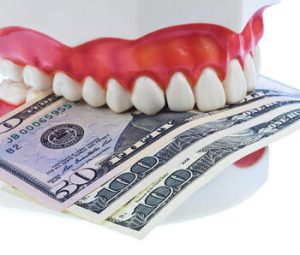Dental veneers stand out as a premier cosmetic solution for individuals aiming for that perfect, natural appearance in cosmetic dentistry treatments. The sheer variety, from traditional veneers to snap-on veneers, offers options for various dental problems and cosmetic desires.
Two of the most sought-after types of veneers are porcelain and composite veneers. A porcelain veneer, an exquisite product of dental labs, resembles natural tooth enamel, making it a favourite for front teeth. On the other hand, composite resin veneers, often known just as composite veneers, provide a quicker alternative with less enamel removal, applied directly on the tooth’s surface.
There’s also a place for veneers like palatal veneers, lumineers veneers, and zirconia veneers, among others. Removable veneers, also known as snap-on veneers, have gained traction for their non-permanent and less invasive nature.
The significance of selecting the correct type of dental veneer must be stressed more. The choice influences various factors, from the patient’s oral health and tooth sensitivity to the overall veneer cost. Thus, diving into the depths of different types of veneers ensures a well-informed decision for a radiant smile.
What are Dental Veneers?
Diving into the world of cosmetic dentistry, one must recognise the significant role of dental veneers. These thin laminates are designed to be placed over the front teeth, rendering a natural appearance. They are a cosmetic solution that addresses broken or misshapen teeth and ensures a flawless smile makeover.
With the plethora of types of veneers available, it’s essential to understand their distinct characteristics. Porcelain veneers, also known as porcelain laminate veneers, are renowned for replicating the natural tooth enamel’s luminescence. They typically require a certain degree of tooth preparation, where a layer of the tooth structure may be removed. Composite veneers or composite resin veneers, on the contrary, can be directly applied to the tooth’s surface, often necessitating less enamel removal.
Removable veneers, such as the popular snap-on veneers, have grown in demand due to their non-permanent nature, allowing patients the flexibility to choose their cosmetic dentistry procedure’s permanence.
The origins of veneers trace back to Hollywood’s golden era, where temporary restorations were created for actors to perfect their on-screen appearances. As cosmetic dentistry evolved, so did the materials and techniques, giving birth to various veneer types, each promising an improved natural appearance and long-lasting dental restoration.
Materials Used in Veneers
Dental veneers, the cosmetic dentistry champions, owe their success to the materials from which they are crafted. But what are these materials that help craft a flawless smile?
Leading the parade are porcelain veneers. Known for their unparalleled natural appearance and strength, these veneers resonate with the sparkle of natural teeth. Porcelain veneers, while requiring more detailed tooth preparation, offer a durable and stain-resistant surface, aligning perfectly with the aesthetics of the patient’s teeth and ensuring longevity.
In contrast, composite resin veneers, often referred to simply as composite veneers, have gained traction for their efficiency and cost-effectiveness. Composed of composite resin, they can be applied directly to the tooth’s front surface, necessitating less tooth structure removal. While they might not boast the same longevity as porcelain, their ability to be repaired and modified adds to their appeal.
Beyond porcelain and composite resin, other veneer materials like zirconia or lumineers offer alternatives to traditional veneers. Though less common, they provide unique benefits tailored to individual dental needs, ensuring everyone finds their perfect cosmetic solution.
Different Types of Veneers
When it comes to achieving that flawless smile, dental veneers lead the pack in cosmetic dentistry treatments. Let’s dive into the varieties available.
Traditional Porcelain Veneers
An epitome of elegance in cosmetic dentistry, porcelain veneers have gracefully withstood the test of time. These custom-crafted shells, specially contoured for the front teeth, pledge a radiant, timeless smile transformation.
Benefits:
Extended Lifespan: It’s about immediate transformation and lasting change. Constructed with meticulous precision and premium materials, porcelain veneers promise longevity, often serving wearers for multiple decades with due diligence.
Stay Sparkling: One of the remarkable advantages of porcelain is its resistance to stains. No more fretting over the occasional indulgence in a glass of wine or coffee. Your smile remains pristine.
Drawbacks:
Tooth Preparation: The quest for a perfect, indiscernible fit demands alterations. This involves shaving a minimal amount of the tooth’s natural enamel, a crucial step in the veneer fitting process.
Higher Cost: Excellence often demands a higher price point. While porcelain veneers represent a significant investment, the confidence and aesthetic benefits they confer are immeasurable to many.
Best Suited For: Those poised for a profound, enduring cosmetic upgrade who harbours a deep commitment to maintaining impeccable oral health will find porcelain veneers an ideal match.
Composite Veneers
Comprising composite resin, they offer an alternative to porcelain.
Benefits:
- Affordability: A more budget-friendly veneer option.
- One-Visit Wonder: A single visit can often complete the entire process.
Drawbacks:
- Durability Issues: More susceptible to damage and staining.
- Lifespan: They typically have a shorter shelf-life than porcelain.
Porcelain vs. Composite: While composite veneers are a quicker and more affordable option, porcelain veneers stand out in terms of durability and aesthetics.
Palatal Veneers
These veneers find their place on the inner surfaces of the front teeth.
What and Why:
They are mainly crafted to safeguard the back of teeth from potential damage, especially beneficial for those who grind their teeth.
Usage:
It is best suited for those experiencing wear on the inner tooth surfaces or seeking protection against teeth grinding.
The Procedure: How are Veneers Applied?
If you’re exploring the realm of cosmetic dentistry and considering veneers, it’s essential to understand the procedure and what to expect. Dental veneers can drastically alter your smile, so here’s a deep dive into how these are applied.
Consultation and Preparation
Your journey to getting veneers begins with a consultation. Your local dentist will assess your oral health, ensuring no underlying dental problems like gum disease or tooth decay exist. The type of veneers you choose – porcelain or composite – will be determined based on your cosmetic concerns, budget, and desired outcome.
Tooth preparation is a critical step, especially for porcelain veneers. This involves slightly removing tooth enamel to accommodate the veneer, ensuring a natural appearance that aligns seamlessly with the surrounding teeth. Certain veneers, like lumineers veneers, may require less tooth preparation for those wary of enamel removal. After this, an impression of the patient’s teeth is sent to a dental lab, where your custom veneers are crafted.
Application Process for Porcelain Veneers vs. Composite Veneers
Composite Veneers: The process for composite resin veneers is more direct. Unlike porcelain veneers, which require a dental lab, composite veneers are sculpted directly onto the patient’s teeth in just one appointment. The composite resin is applied layer by layer, carefully moulded, and then hardened with a special light. This direct method eliminates the need for temporary veneers or multiple visits.
Whether you opt for porcelain or composite, the result is a more natural appearance and, with proper care, a long-lasting solution to various cosmetic concerns.
Maintenance and Care
Investing in dental veneers is a significant step in cosmetic dentistry, leading to a flawless smile that exudes confidence. But how do you ensure their longevity? Let’s delve into the care and potential hurdles for veneers.
The Basics of Veneer Care
The care basics remain consistent regardless of the types of veneers you’ve chosen, be it porcelain or composite resin veneers. Think of them as your natural teeth; they need similar attention and diligence. Brushing twice daily, flossing, and regular dental check-ups are the bedrock of veneer maintenance. Using a soft-bristled toothbrush and non-abrasive toothpaste helps keep their brilliance intact.
Avoiding foods and drinks known for staining is also a wise move. Though veneers are more resistant to stains than natural teeth, they can still be affected over time. Moderation is key.
Understanding Lifespan and Hiccups Along the Way
Porcelain veneers are renowned for their durability, lasting anywhere from 10 to 15 years with proper care. Composite veneers, while cost-effective and quicker to apply, might need replacement after 5 to 7 years.
It’s essential to remember that while veneers are robust, they aren’t impervious. Biting on ice, hard candies, or grinding teeth can compromise their integrity. Regular dental visits can spot such issues early on, ensuring your veneers remain in tip-top condition.
Embrace your veneers with knowledge and care, ensuring they remain a cosmetic solution you can wear with pride for years.
Factors to Consider When Choosing Veneers
Embarking on a cosmetic dentistry journey is exciting, especially with the transformative potential of dental veneers. As the options in types of veneers grow, it’s imperative to stay informed to ensure your choice delivers the desired results.
Cost
Veneers’ cost can be a determining factor for many. Porcelain veneers, crafted meticulously in dental labs, come with a heftier price tag. Their longevity and supreme aesthetics often justify this cost. In contrast, more economical composite veneers may necessitate more frequent updates, which could add up over time. When considering veneers, viewing them as a long-term investment in your smile and oral health is essential.
Longevity
Durability is a prime consideration. The superior materials and craftsmanship of porcelain veneers mean they can remain pristine for over a decade, resisting stains and chipping. Composite veneers, while robust, may start to show wear after 5 to 7 years, requiring earlier replacements. When deciding, evaluate how frequently you’re willing to update or replace your veneers.
Natural Appearance
Achieving a natural look is the pinnacle of cosmetic dentistry. Porcelain veneers have garnered accolades for mirroring the natural tooth’s luminosity and texture. Though continually improving, composite resin veneers might sometimes hit different aesthetic benchmarks.
Recovery Time
Tooth preparation varies between veneer types. Opting for porcelain veneers usually involves a more detailed preparation phase, with more enamel removal and potential for tooth sensitivity post-procedure. Composite veneers, requiring less invasive procedures, often promise a quicker recovery.
In essence, veneer selection is a personal decision, requiring a balance of cost, longevity, aesthetics, and procedure considerations. As you explore your options, always lean on the expertise of dental professionals. A comprehensive consultation can illuminate the best path forward, ensuring your veneers enhance your smile and support your overall dental health and well-being.
FAQ Section
- What are the primary purposes of dental veneers?
Veneers primarily enhance teeth’ aesthetic appearance by addressing discolourations, chips, gaps, or misalignments.
- How durable are dental veneers?
Porcelain veneers boast impressive durability, with a lifespan of up to 15 years when cared for appropriately. Composite veneers, while durable, generally last around 5 to 7 years.
- I’ve heard veneers can cause tooth sensitivity. Is this true?
During the tooth preparation phase for veneers, some individuals might experience temporary sensitivity. This sensation usually diminishes once the final veneers are in place. If it doesn’t, it’s crucial to see your dentist.
- What is the recommended care routine for veneers?
Regular oral hygiene practices like brushing, flossing, and routine dental visits are key. Additionally, be cautious of consuming hard or stain-causing foods and drinks.
- Can I expect my veneers to discolour over time?
Porcelain veneers resist stains effectively. On the other hand, composite veneers might stain if regularly exposed to certain foods, drinks, or tobacco.
- Porcelain vs. Composite Resin Veneers: Which is better?
Both have their merits. Porcelain veneers are custom-made in a dental lab, ensuring a perfect fit and natural look. Composite resin veneers can be sculpted directly on the tooth, making them a faster and often more affordable choice.
- What should I be wary of after getting veneers?
While veneers are generally safe, be aware of prolonged sensitivity, discomfort, or signs of a veneer coming loose. Regular dental visits can help mitigate any potential issues.
- Will people be able to tell I have veneers?
When done professionally, veneers blend seamlessly with natural teeth, ensuring they’re virtually undetectable.
- Can I go back to my natural teeth after getting veneers?
Opting for composite veneers involves little to no enamel removal, making them reversible. However, since porcelain veneers require enamel removal, they are a permanent solution.
- Are veneers a significant investment?
The cost of veneers can vary based on material, complexity of the procedure, and geographical location. It’s wise to get a personalised quote from your dental office.
Conclusion
Porcelain veneers have long been hailed for their natural appearance and durability, making them a favourite for those seeking long-lasting solutions. Composite veneers, requiring less tooth preparation, might be more suited for those looking for a quicker cosmetic solution. Every type of veneer has unique benefits and potential considerations, such as enamel removal or tooth sensitivity.
Achieving a smile that seamlessly blends with your natural teeth requires more than selecting the right veneer material. It’s about understanding your oral health, the structure of your teeth, and your aesthetic vision. This is where the invaluable guidance of a skilled dentist comes into play.
At Casey Dentists, we pride ourselves on being at the forefront of cosmetic dentistry. Our team is equipped to guide you through the intricate world of veneers, ensuring your choice enhances your smile and overall oral health. Your journey to a dazzling, confident smile begins with an informed choice. Contact Casey Dentists at 07 4801 7035 to chart your personalised path to cosmetic excellence.
References:
https://www.ncbi.nlm.nih.gov/pmc/articles/PMC6076883/
https://pubmed.ncbi.nlm.nih.gov/9893514/
www.dentalnews.com/2023/07/14/understanding-porcelain-veneers-a-comprehensive-guide.
https://www.healthline.com/health/dental-veneers
https://www.healthline.com/health/composite-veneers



